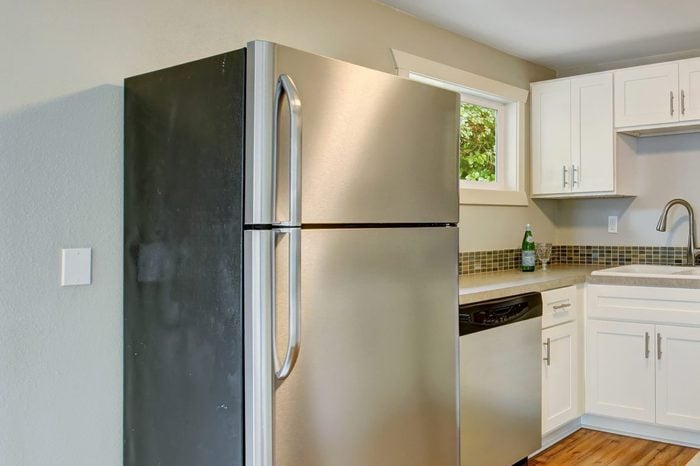
Safety experts agree: Keep the top of the fridge free
When space is at a premium, it’s important to maximize every square inch. If you have a small kitchen, that means getting a little creative with kitchen organization. Stackable bins, Lazy Susans and other space-saving kitchen storage ideas make the most out of tight situations, but there’s one spot you should think twice about: the top of your fridge.
Really? But look at all that room! It’s practically begging you to put something up there. What could be the harm? Well, even though there’s a lot of usable space on the top of the fridge, home-safety experts and firefighters say it’s not a great idea. Here’s why.
Why shouldn’t you store items on top of the fridge?
There are a few reasons this is a no-no, but mostly it’s about airflow. “Top storage can impact the ventilation of the refrigerator,” according to Capt. James “Jay” Flynn of the Denver, North Carolina, Fire Department. Your fridge gives off heat in the process of cooling and freezing your food, and that heat has to go somewhere. To dissipate it, fridges have condensers located on the top, sides or back, depending on the model.
If you pile a bunch of stuff up there, blocking good airflow, “it can make the fridge work harder to keep your food cold,” says Rebecca Edwards, a security expert with SafeWise, because heat leaving the condensers doesn’t get carried away as efficiently as it should. This excess heat buildup “can lead to reduced appliance life at best and [be] a potential fire hazard in a worst-case scenario,” Flynn explains.
In addition to being an unexpected fire hazard, top-of-fridge storage is terrible for your food, Edwards adds. And that’s not all. Below, Edwards and Flynn tell us what we can and can’t store up there (spoiler alert—it’s mostly can’t) and how to make top-of-fridge storage safer.
Get Reader’s Digest’s Read Up newsletter for more organizing tips, humor, cleaning, travel, tech and fun facts all week long.
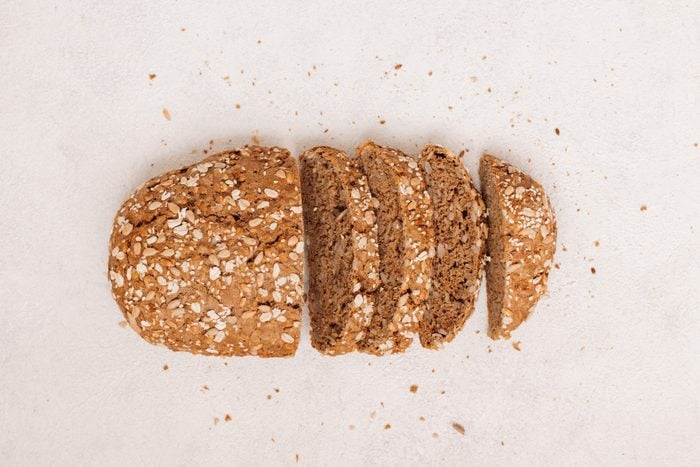
Bread
Bread and baked goods like rolls and bagels don’t need any help going stale—they accomplish that well enough on their own. A flaky homemade baguette might last a day or two, and store-bought white bread might last about a week. And that’s with proper storage, which is definitely not on the top of your fridge.
Remember, ventilation is critical, and blocking the airflow with a loaf of bread does not work out well for the bread (or the fridge). As Edwards points out, “that airflow is also warm, which dries foods out and can make them stale.” For plastic-bagged bread, the conditions become ripe for mold.
Bottom line: Storing bread on top of your fridge will take days off its shelf life. Organize your kitchen counters with a breadbox instead.

Cookbooks
The internet is often our source for recipe inspiration, but sometimes a cherished family recipe or a handy copy of Joy of Cooking has no digital equal. You want those go-tos somewhere close. Unfortunately, cookbooks on your fridge are a fire hazard. “Paper and other flammable items shouldn’t be stored on an appliance that’s working so hard,” Edwards says.
That goes for loose paper you might have tucked into the cookbooks, like recipe cards and magazine tear-outs, too. If they fall behind the fridge, they can block ventilation. And cookbooks are heavy! If one comes down on your head, you’ll wish you’d just put it in the pantry.
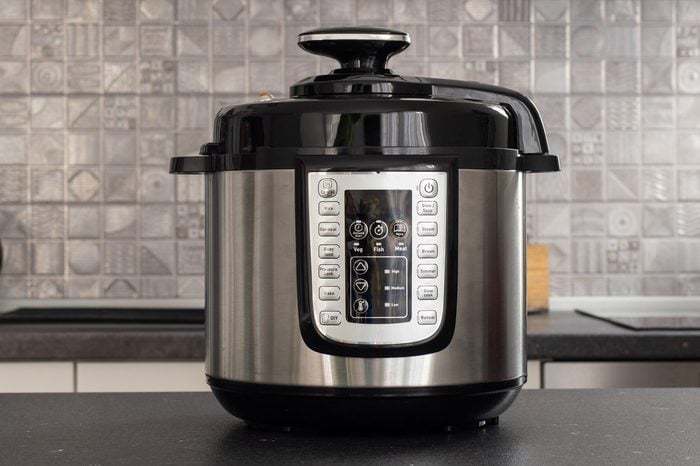
Small appliances
Storing appliances that don’t see daily use, like rice cookers and air fryers, can be a challenge. They’re bulky, so getting them out of the way is a priority. But you don’t want to make it super hard to drag them out when needed. And the top of the fridge is, like, right there. If cupboard space is limited, that’s some prime real estate.
Bad idea. “Things like a coffee maker, toaster or air fryer may fit perfectly on top of the fridge, but they can easily shift and fall,” Edwards says. Every time you open and close the door, the appliance moves ever so slightly, potentially creeping closer to the edge.
For this reason, Flynn says “items of heavy weight, or unstable items that could fall and cause injury, should be avoided” in this spot. If you have the space, an appliance garage is a great alternative to fridge-top storage.
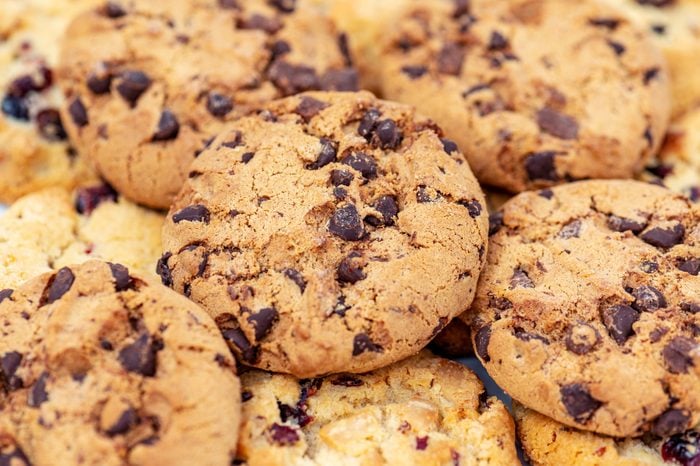
A cookie jar
Kids are on to your cookie-hiding schemes. They know where the cookie jar is, and the few extra feet to the top of the fridge won’t faze them. That’s why “anything that could tempt a kid to climb up and get [it] is a bad idea to keep on the fridge,” Edwards says. “The risk of them falling is high.” There are also the broken shards to contend with if your glass or ceramic cookie jar takes a tumble.
Another problem? Cookies and other goodies go stale faster than usual on the fridge, succumbing to the same heat and airflow issues that take down a loaf of pumpernickel. To keep your cookies fresh, invest in an unbreakable, airtight food-storage container instead of a cookie jar. And for your kids’ safety, hide them anywhere but the top of the fridge.

Medicine
Because it’s up high, the top of the fridge can seem like a safe place to stash medications. “But children are determined,” Edwards says, and it’s just too risky. Even if your child is not a daredevil, “having meds out in the open, instead of behind a locked cupboard, is a potential disaster waiting to happen,” she says. It only takes a second for a curious child to mistake cough syrup for Kool-Aid.
The other issue is the efficacy of the medicines themselves. If you’ve ever read the label on your OTCs and prescriptions, you’ve likely seen this phrase: “Store in a cool, dry place.” Anywhere in the vicinity of a kitchen appliance is just the opposite, so keep the drugs in the medicine cabinet.

Cereal
Cabinets never seem to be exactly the right height for cereal boxes, do they? There might not be enough space to store them upright, depending on how big they are. Put them on their sides and you risk spills, especially if the boxes aren’t closed before they’re put away.
Behold, the fridge top. Look at all that space—and no height restrictions! Unfortunately, this one’s not a great idea either. Lightweight and unstable, cereal boxes are a hazard trifecta: They’re flammable, they block ventilation and they can fall on you or behind the fridge. Plus, if left open, cereal stales easily and “can also attract pests, which is a household and food safety hazard,” Edwards says.
Instead, store them in your pantry or cupboard using airtight food-storage containers, which keep your food fresh and your fridge top hazard-free.
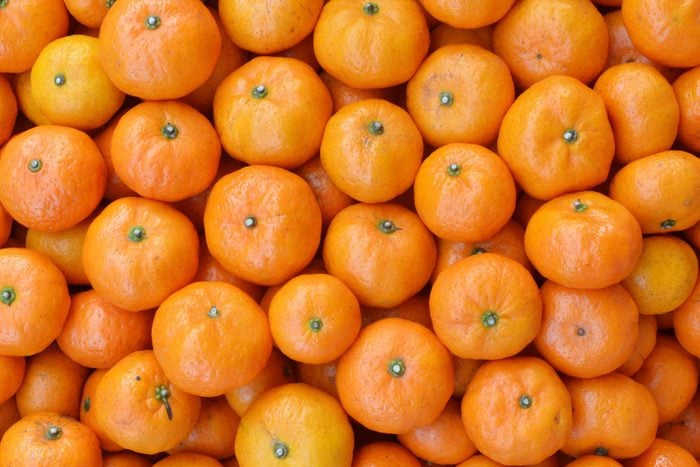
Fresh produce
Sure, most of your fruits and veggies go right into the fridge, but bananas and avocados need a home too. It’s tempting to have a basket or bin on top of the fridge for stuff like potatoes and onions, but Edwards says that’s a mistake: “Putting them on top of the fridge can speed deterioration, making that basket of farmers-market goods a feast for pests like fruit flies,” she says.
And if a stray lime rolls behind the fridge, it could be years before you find its desiccated shell. Keep produce on the counter or in the pantry, away from heat—and where you can keep an eye on it.
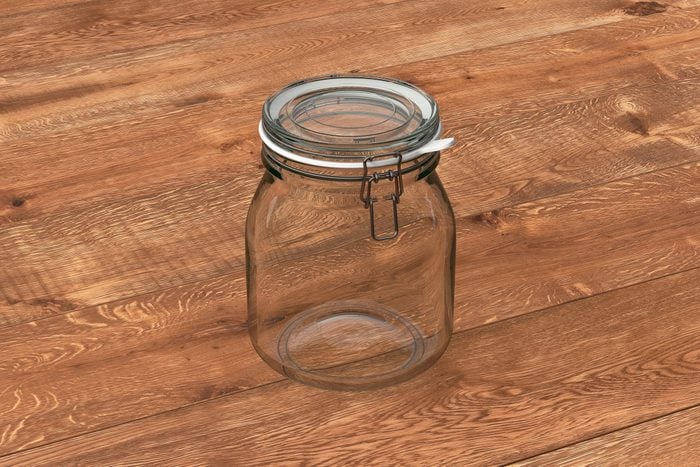
Glass bowls and jars
File this one under Falling Hazard. Mixing bowls, casserole dishes, Mason jars and other glass kitchen items are heavy, and if they fall on you or a member of your family, you could be in a world of hurt. (Edwards knows this from experience!) Nestling bowls together in a cabinet is fine, but stacking them on your fridge can cause problems if they shift.
All the nooks and crannies of bowls and glass kitchenware also harbor grease and dust, which Edwards says are pest and fire hazards.
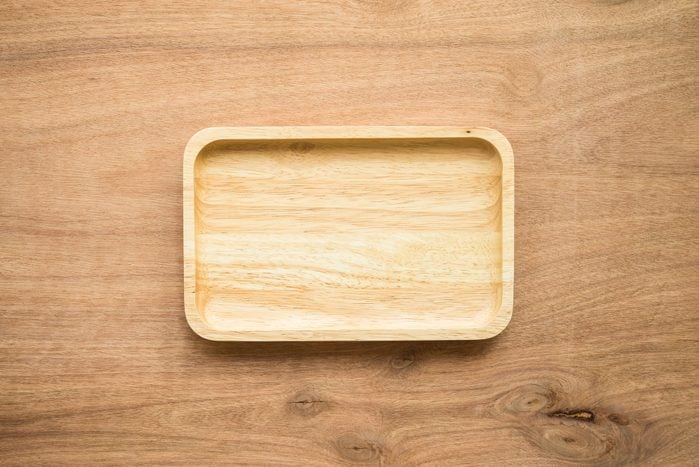
TV trays and platters
Oversized, flat household essentials always seem to migrate to the fridge top because, honestly, where else can they go? TV trays, in particular, need to be handy, but unless you have a special cabinet, storage is tricky. The top of the fridge looks so inviting after you’ve been wandering around aimlessly, trying to find a good spot.
“From a safety perspective, storing anything up there is not really recommended,” Edwards says, though she notes that not all risk is equal. “Things like larger platters that are reasonably flat and may block less air carry less risk.” But it’s important to use a heatproof rubber mat to keep things from moving around. Clean these items once a week if you just can’t resist the storage opportunity. Otherwise, store them in the pantry, butler’s pantry or a nearby closet.

Wine
Heat is the enemy of wine. Good wine, bad wine, white wine, red wine—the ideal temperature for wine storage is 55 degrees Fahrenheit, which is much, much chillier than the top of your fridge. Storage temps approaching 75 degrees can affect wine (for the worse) after just one week, while short spikes above 85 degrees for just 30 minutes or less can do major damage to wine’s aroma, flavor and color.
The cold temps of the fridge aren’t great for long-term storage either, and no matter where you store it, wine takes up a lot of room. It’s natural to look to the top of the fridge, especially if you have a wine rack and no place to put it. But resist the urge to stick it up there, and find a cool, dark place instead.
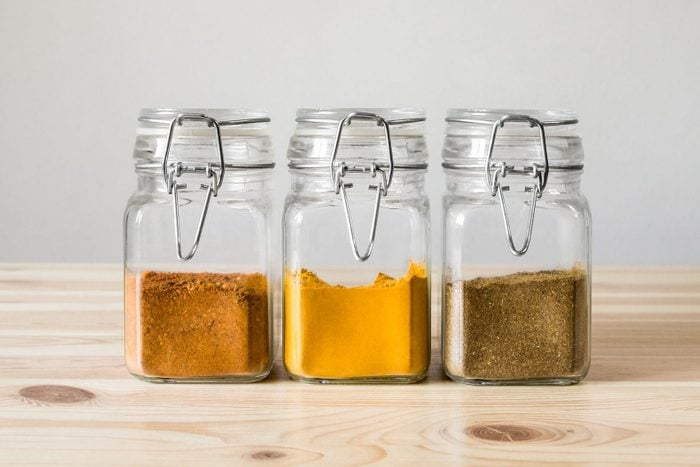
Spices
Like wine, spices need proper storage to maintain peak freshness and flavor. Unlike wine, spices do not get better with age. At best, you have about one to four years to use them (whole spices last a little longer than ground), and some start to lose potency even sooner. Storing spices atop the fridge, as you’ve probably guessed by now, isn’t a great plan. Instead, find a spice storage solution that keeps herbs and spices fresh and fragrant.
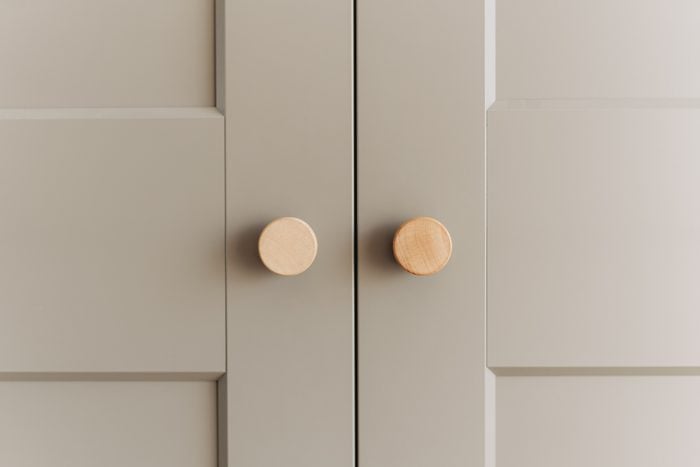
Is there a safe way to use over-the-fridge storage?
Yes! According to Edwards, the best and safest way to use this space is to add a kitchen cabinet over your fridge (not resting on it). “This preserves that crucial ventilation and also ensures that items don’t shift and move closer to the edge every time you open or close the fridge,” she explains. Always anchor cabinets or shelves to the wall for your safety.
If that’s not an option and you have no choice but to store something up there, make sure the item is not flammable, cannot fall off and doesn’t restrict airflow, Flynn says. Fridges usually need an inch of free space on top to allow them to breathe properly, he says, but check the manufacturer guidelines for specific distances.
About the experts
- Rebecca Edwards is a security expert at SafeWise. As a lead safety and technology reporter, she spends dozens of hours each month studying home and safety trends.
- James “Jay” Flynn, captain of the Denver Fire Department in Denver, North Carolina, is also the outreach coordinator at Homes for Heroes, a company that assists first responders, military members, teachers and health professionals. Flynn holds degrees in fire protection, public safety and emergency management.
Sources:
- McCormick: “How Long Do Spices Last?”
- Purdue University Extension: “Wine Storage Guidelines”
- U.S. Department of Agriculture: “Will Spices Used Past Their Expiration Date Be Safe?”
